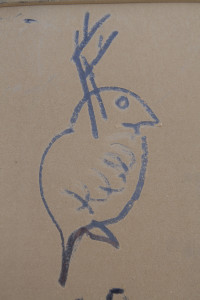Genetics of co-evolution in a host-parasite system
The study of processes that maintain adaptive genetic diversity have long interested evolutionary biologists. From this perspective, host-parasite coevolution provides valuable insights. Reciprocal interactions between hosts and parasites can lead to balancing selection and might actively maintain polymorphism at immunity genes in the host, as observed in Vertebrates for genes of the Major Histocompatibility Complex (MHC). In Daphnia magna, an emergent model species in epidemiology and evolutionary biology, the interaction with the obligate bacterial endoparasite Pasteuria ramosa follows a matching-allele model, where parasites strains infect specific host genotypes and hosts resist to specific parasites. Under this model, resistance for two parasite genotypes is reversed by switching one allele at one host locus. This model allows for cyclical temporal variation in allele frequencies (Red Queen dynamics). Such negative frequency-dependent selection imprints genetic spatio-temporal variation at selected loci. I am using candidate genes and genomics tools to characterize the evolutionary dynamics of this interaction, but am more focusing on the host, Daphnia magna, for which genomic resources are more reliable.
Color polymorphism and small-scale differentiation in an island bird
 Color polymorphisms are now a classical theme in evolutionary biology. As they can be easily characterized they allow for precisely studying the links between genotypic and phenotypic changes. However, while studies on model or near-model species have provided a dramatic database for genetic bases of coloration, few is still known about the genetic architecture of polymorphisms occurring in natural populations.
Color polymorphisms are now a classical theme in evolutionary biology. As they can be easily characterized they allow for precisely studying the links between genotypic and phenotypic changes. However, while studies on model or near-model species have provided a dramatic database for genetic bases of coloration, few is still known about the genetic architecture of polymorphisms occurring in natural populations.
During my thesis I worked on the Réunion Grey White-Eye (Zosterops borbonicus), an endemic species displaying striking patterns of colour variation. I contributed to a better understanding of the evolutionary dynamics of this system by characterizing the population genetics dynamics in the polymorphic complex found at high altitude. I also used candidate genes and genomic approaches to characterize the proximate mechanisms underlying this polymorphism.

